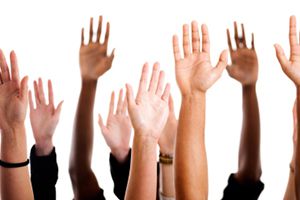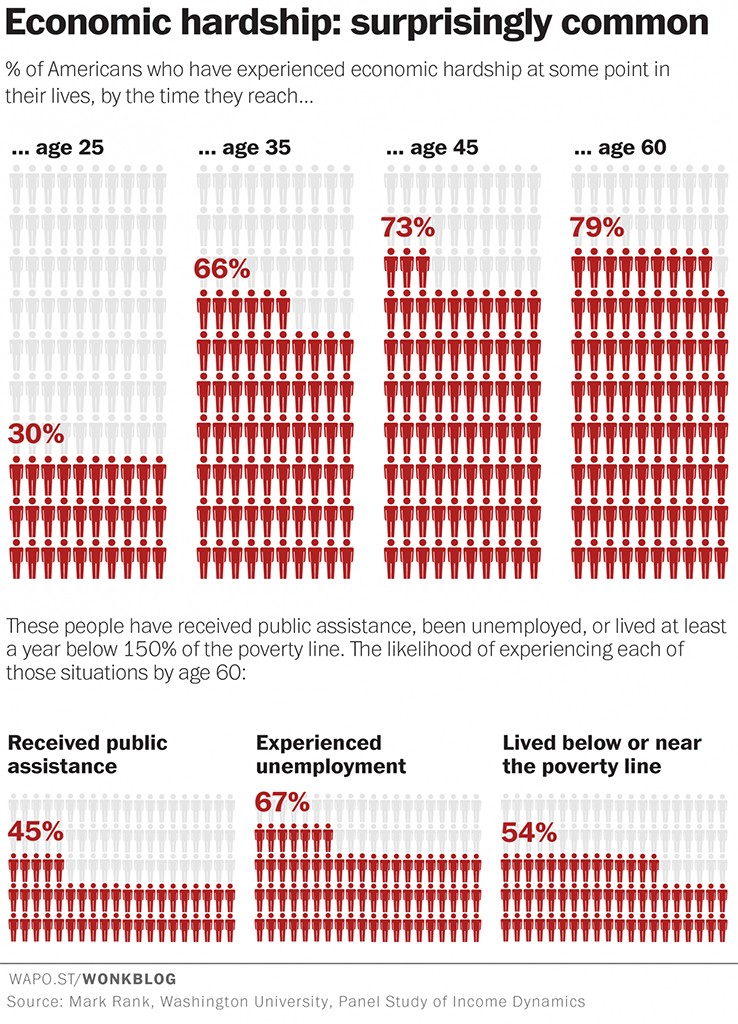 Will the real poverty rate please stand up? The standard figure, based on an annual federal government census, is now being recognized as only a snapshot of a moment in time and not an accurate measure of the full extent of poverty in America.
Will the real poverty rate please stand up? The standard figure, based on an annual federal government census, is now being recognized as only a snapshot of a moment in time and not an accurate measure of the full extent of poverty in America.
For example, a picture of you standing in front of your dirty car doesn’t mean that your car has always been and always will be dirty – or that it’s dirty because of some personal failure of yours. Nor does it mean you’re the only person around whose vehicle may become less than sparkling.
But that is the impression many have of people living in poverty in the U.S. because of the oft-cited 15% figure: that the minority of people with no to little money who are captured in a yearly government income and poverty report are the same people that show up in that report every year – they are “America’s poor”. As Columbia University Social Work Professor Irwin Garfinkel says, “One of the biggest myths about poverty in the United States is that a relatively small segment of the population is poor, and that this represents a more or less permanent underclass.”
Let’s be clear – poverty, especially if you’re born into it, can be difficult to escape, as a new film, Rich Hill, documents.
Many viewers and critics will see much of what is portrayed in the film as “culture,” but it’s actually structure: the product of decades of disinvestment from communities like [Rich Hill, MO], which leaves behind depressed, isolated, local economies with no jobs, a dwindling tax base, and nothing to attract business or new residents; aging, dilapidated housing stock; underfunded, inferior schools; little or no access to health care and other social services; and few people around who aren’t as poor as you are.”
In other words, poverty is less about particular people than about particular places. Which helps explain why the odds of escaping poverty in the U.S. (i.e. economic mobility) haven’t changed in 20 years.
|
7/24/15 update to this blog post: The Washington Post now reports that a new study has found that 4 out of 5 Americans will have experienced economic hardship by age 60. |
 |
Poverty expert Stephen Pimpare says generational poverty – the popular idea of a fixed but small class of people who are born poor, die poor, and pass on poverty to their children like a genetic trait – is the exception, not the rule. If we stop thinking about poverty as linked to people but instead to the places and circumstances we live in, we can recognize a hard truth: the actual poverty rate in America isn’t 15% but more than 50%.
More than 40 percent of Americans between the ages of 25 and 60 will be poor for at least a year. Over the same period, more than half will be poor or nearly poor, with income at 150 percent of the poverty line, or about $27,000 annually for a family of three. So poverty in the U.S. is, in fact, a much larger problem than we think it is, and it’s one that most Americans will face.”
Poverty is seeping into more places in this country – places it didn’t exist before, as seen in the growing rate of child hunger in wealthy suburbs. Why?
Income inequality. It’s harder to kick a field goal when you keep getting moved down the field. It’s harder to move out of poverty into wealth when that distance is growing by leaps and bounds.
It’s basic math. There’s simply no way that we can have conditions that allow the wealthiest 20% of Americans to pocket ever-increasing amounts – now 87% of the nation’s wealth, leaving the other 80% with the 13% of the pie that remains – without growing economic insecurity in the rest of the nation.
No wonder 76% of Americans live paycheck to paycheck.
The fix? As one TalkPoverty Blog reader put it: “We need more people who are facing poverty in America to stand up and express themselves, to put a real human face (‘yes, I’m your your neighbor’) on this politically & socially abstract issue.”
Poverty is not a sickness that strikes an isolated minority of Americans but is evidence of a diseased nation whose symptoms a majority of Americans experience.
Fostering awareness of this truth (and retiring the insufficient 15% data point) would probably make it easier for those who are struggling to “stand up and express themselves.” It would also likely lend some much-needed urgency and clarity to efforts to fix the policies that create poverty and economic inequality, while giving our leaders a larger mandate to do so.
We should never say the word “poverty” without the words “inequality” and “injustice” being close behind. People become poor not by personal failing but because the system is engineered to push them down and keep them down.




Yes i agree….